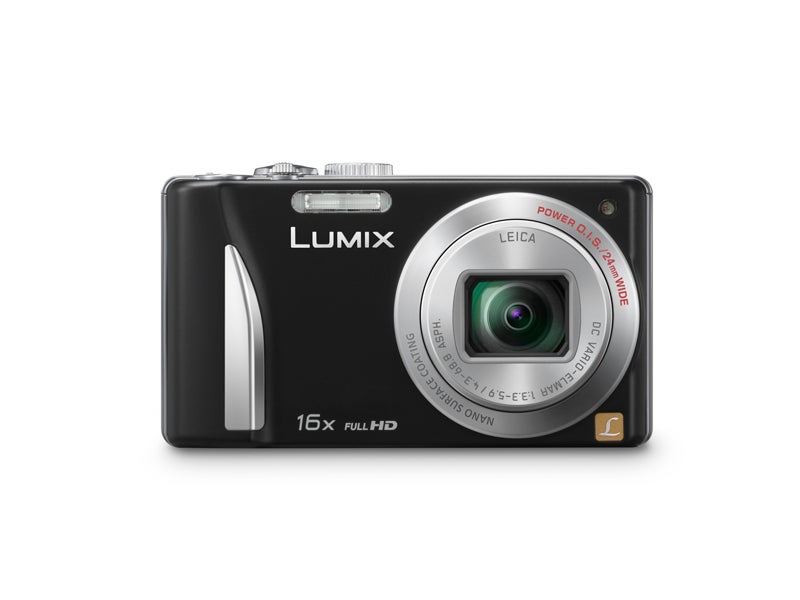Panasonic Lumix TZ25 Review
Panasonic Lumix TZ25 Review
Panasonic's TZ series of compact cameras have long been the go-to option for those looking for a compact camera to take on their travels. The TZ25 is a stripped-down version of the new TZ30, but is the model's performance compromised, or does the TZ25 still deliver?

Verdict
Pros
- Excellent image quality, impressive level of performance
Cons
- Lack of touchscreen could put off some, lack of Raw capture
Key Specifications
- Review Price: £220
Those looking for a compact camera with a full specification to take on their travels have long turned to Panasonic’s TZ range as the first port of call. With the latest refresh of the TZ series, Panasonic announced not one but two new TZ models – the TZ25 and TZ30. The TZ30 maintained the full feature-set with which the TZ series had become synonymous, while the TZ25 is slightly stripped-back, offering a more affordable alternative.
While the TZ25 is undoubtedly a stripped-down version of the TZ30, that’s not to say that the compact doesn’t still pack a weighty imaging punch. The compact features a 1/2.3in CMOS sensor with an effective resolution of 12.1MP – slightly lower than the 14.1MP found on the TZ30.
The compact also features a smaller focal range – while the TZ30 featured a 20x optical zoom, the TZ25 ‘makes do’ with a 16x optical zoom covering a 35mm equivalent focal range of 27-432mm.
Another area at which the purse strings have been tightened in a cost-cutting exercise regards the model’s movie capture. Where the TZ30 features HD video capture at a resolution of 1920 x 1080 and 50p, the TZ25 instead captures at 50i.
The TZ30 also benefits from the inclusion of GPS technology for geo-tagging of images captured, something the TZ25 lacks.
The lack of GPS is really the only compromise made with regards to imaging functionality – the TZ25 still offers the full manual control over imaging settings that travel photographers regularly crave. Alongside these PASM controls sits Panasonic proprietary Intelligent Auto mode, as well as a host of ‘Creative Control’ modes.
The Panasonic TZ25 features a 3in, 460k-dot TFT LCD screen offering a 100% field of view. While it’s the same dimensions as that found in the TZ30, it is lacking the touchscreen functionality, although the popularity and effectiveness of touchscreens is such that this may not be bad news to all concerned.
The TZ25’s design will be instantly recognisable to previous users of the TZ range. Despite the large focal range, the body retains a relatively slim body. A solid mode dial sits on the top of the camera and offers quick access to a range of shooting modes, while a dedicated video record button is also sits on the top plate.
In use, the TZ25 is a reliable performer. Not only does the button layout lend itself to a pleasurable user experience, but the camera’s performance is also impressive. The model is fast to focus and offers an impressive level of focus accuracy. As with the TZ30, the model’s Panasonic Power O.I.S. is also worthy of a mention, offering a noticeably steady shot and thus gaining a stop or two in low-light of long-zoom situations.
Despite the 2MP drop in resolution between the TZ30 and the TZ25, the latter is still capable of capturing an impressive amount of detail. The drop has also allowed the TZ25 to offer the same, if not more impressive, high ISO performance, with settings of up to ISO 800 proving eminently useable. The model’s 16x optical zoom also offers a good level of sharpness, although there is a slight drop-off noticed towards the edges of the frame.
Verdict
While the TZ25 is undeniably a stripped-back version of the TZ30, it’s still an admirable performer. Some of the tech that has been, namely GPS and touchscreen technology, may even be welcome for some, so while compromises have been made, the TZ25 still impresses as a value alternative.
Trusted Score
Score in detail
-
Value 10
-
Design 9
-
Features 9
-
Image Quality 9
-
Performance 9

